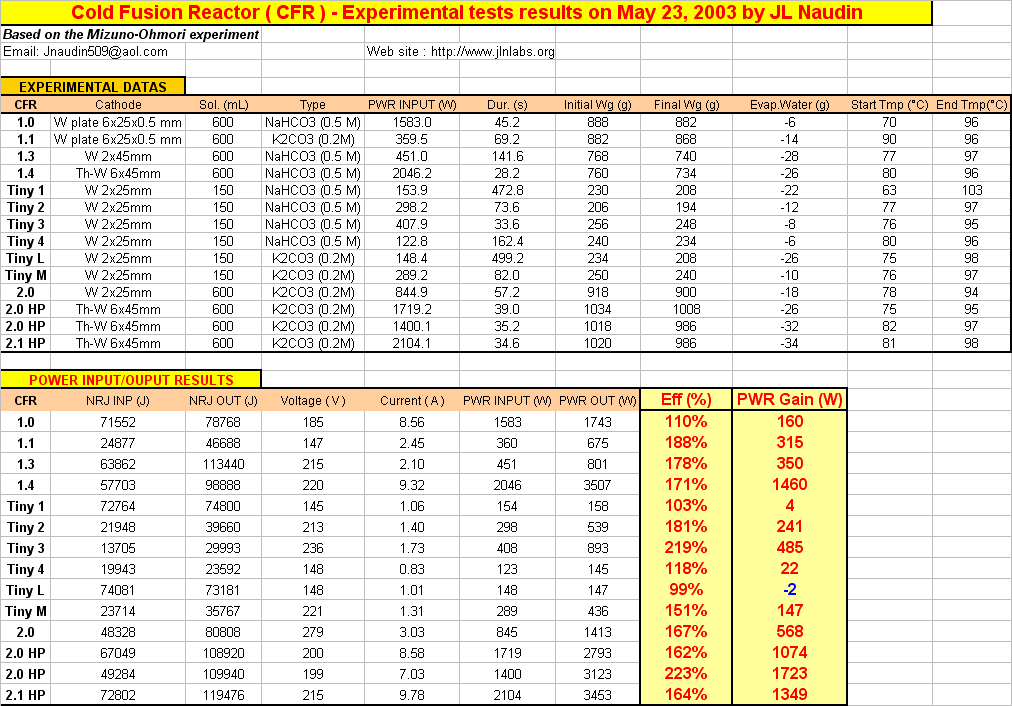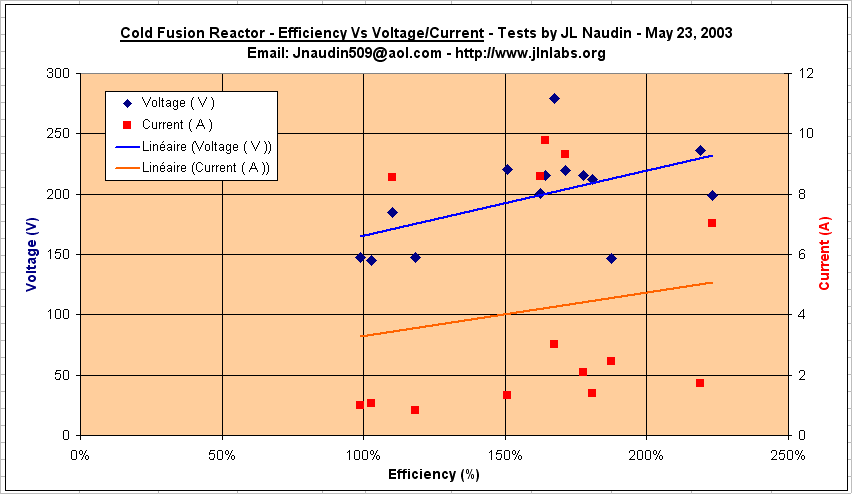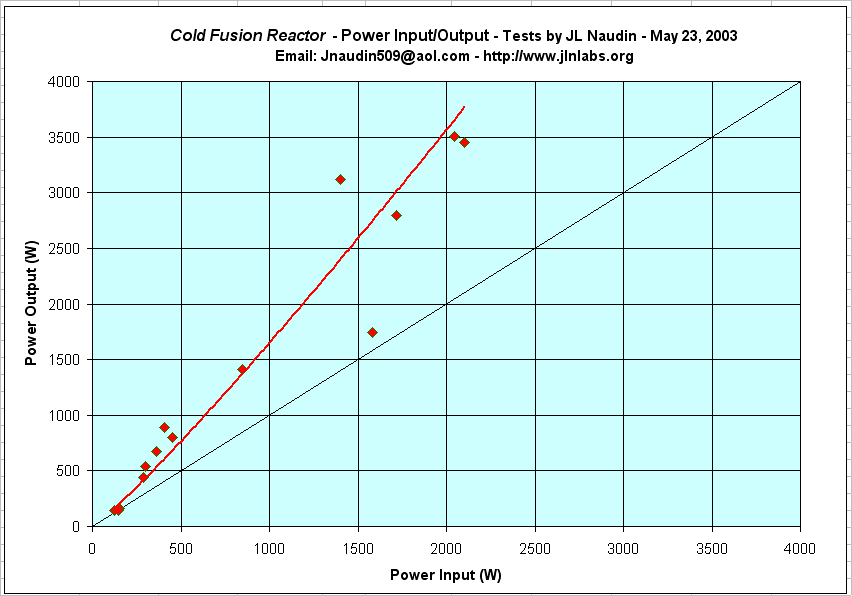


Cold Fusion
Reactor
experimental tests results
created on May 8, 2003 - JLN
Labs - Last update May 23, 2003
Toutes les
informations et schémas sont publiés gratuitement ( freeware )
et sont destinés à un usage personnel et non commercial
All informations and
diagrams are published freely (freeware) and are intended for a private use and a non commercial
use.
The Cold Fusion Reactor ( CFR ) is fully based on the work of the researchers Tadahiko MIZUNO and Tadayoshi OHMORI from the Hokkaido University in Japan. On May 7th, 2003, I have replicated successfully the Mizuno-Ohmori's Cold Fusion experiment. I have used the experimental protocol fully described by Eugene F. Mallove at : http://www.amasci.com/weird/anode.txt and also in the Infinite Energy Magazine Volume 4, Issue 20, 1998



Today, I can say that the Mizuno-Ohomori's Cold Fusion Reactor is fully replicable and that it works very well as described in their papers. You will find below the latest measurements results that I have performed since the May 7th, 2003 :





The Mizuno's CFR
experiment is fully detailled in the papers :
Production
of Heat During Plasma Electrolysis. Mizuno, T., et al - Jpn. J. Appl. Phys. A, 2000. 39: p.
6055
<< Abstract:
Plasma was formed on the surface of an electrode in a
liquid solution when metal cathodes underwent high-voltage
electrolysis. A real-time heat calibration system was designed
for detecting the amount of heat generated during plasma
electrolysis. The measured heat exceeded the input
power substantially, and in some cases 200% of the input power. The heat generation process depended on
the conditions for electrolysis. There was no excess heat at the
beginning of plasma electrolysis. However, after plasma
electrolysis for a long time, a large amount of heat was
generated. The reproducibility would be 100% if all factors such
as temperature, voltage and duration were optimized. Based on the
heat and the products, we hypothesize that some unique reaction
occurs on the cathode surface. This reaction may not occur at
energy levels available during electrochemical electrolysis.
>>
This paper can be
downloaded at the web site of the Japanese Journal of Applied
Physics, http://jjap.ipap.jp/online/. Anyone can register and download
papers there at no cost. http://jjap.ipap.jp/journal/pdf/JJAP-39-10R/6055.pdf
Confirmation
of anomalous hydrogen generation by plasma electrolysis. Mizuno, T., T. Akimoto, and T. Ohmori. in 4th
Meeting of Japan CF Research Society. 2003. Iwate, Japan:
Iwate University.
<< Abstract:
Direct decomposition of water is very difficult in normal
conditions. Hydrogen gas is usually obtained by the electrolysis.
Pyrolysis decomposition of water occurs at high temperatures,
starting at ~3000ºC. As we have already reported, anomalous
hydrogen is sometimes generated during plasma electrolysis.
Excess hydrogen usually appears once certain difficult conditions
during high temperature glow discharge electrolysis are met.
Here, we show that anomalous amounts of hydrogen and oxygen gas
are generated during plasma electrolysis excess gas generation,
presumably from pyrolysis. This is indirect proof that
exceptionally high temperatures have been achieved. (Direct
measurement of the reaction temperature has proved difficult.)
Continuous generation of hydrogen above levels predicted by
Faraday’s law is observed when temperature, current density,
input voltage and electrode surface meet certain conditions.
Although only a few observations of excess hydrogen gas
production have been made, production is sometimes 80 times higher
than normal Faradic electrolysis gas production. >>
This paper can be
downloaded at : http://www.lenr-canr.org/acrobat/MizunoTconfirmatib.pdf
<< No one has patents or may be able to get them since the effect was noticed in other forms (1916!) and reported extensively in the Journal of the Electrochemical Society, April, 1950, p.133 in an article titled ("The Anode Effect in Aqueous Electrolysis," by Herbert Kellogg of the School of Mines, Columbia University. New York >> has said Eugene F. Mallove...
Interesting documents and references :
| PATENT : WO0025320 : "
Energy Generation " from Eccles Christopher
Robert ( GB ) - May 4,
2000 Abstact : |
PATENTS from MIZUNO
TADAHIKO (JP) :
|
![]() Email : JNaudin509@aol.com
Email : JNaudin509@aol.com
return to the Cold Fusion Project
home page